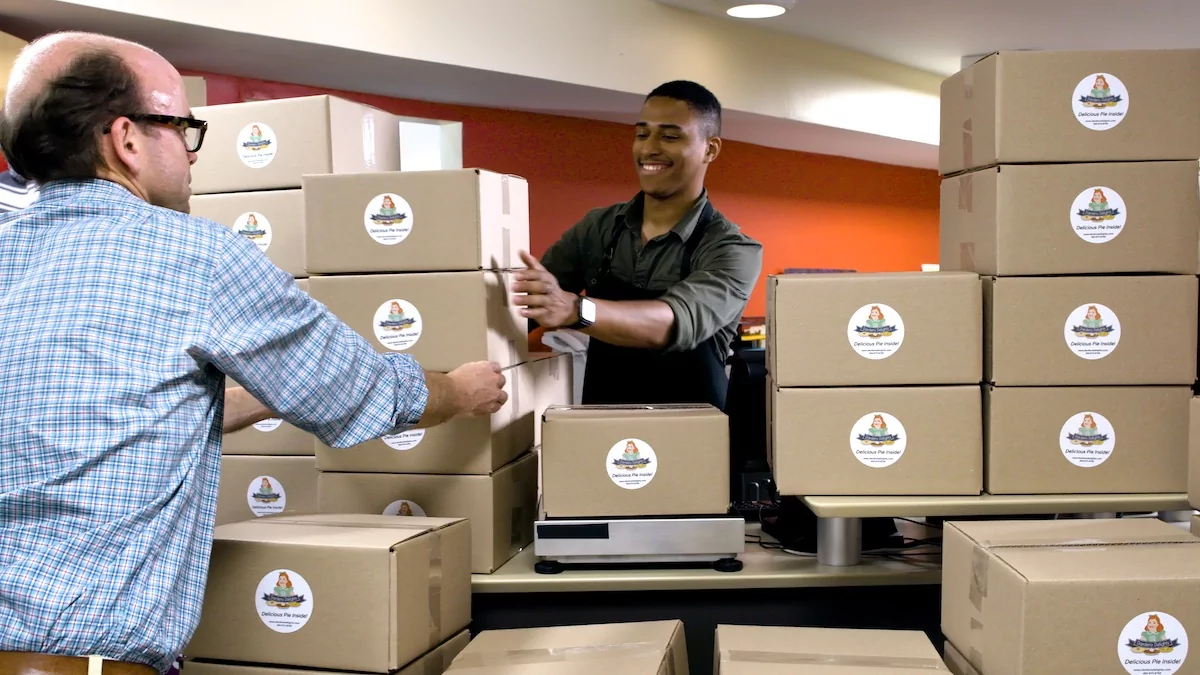

Whether you’re a small business owner or a thoughtful parent sending a care package to a kid in college, packaging and shipping can seem daunting. Lots of money is wasted on packaging and shipping because myths and misconceptions are still floating around, causing mistakes, damaged goods, and unhappy customers. Here, we’re going to set the record straight on the most common packaging and shipping myths, so small businesses can make smart choices and get their products to customers safely and affordably.
Here are the top five most common misconceptions, a few helpful small business shipping tips, and how a little expert help can make a big difference when shipping important items.
Before you grab a household box and slap a shipping label on it, you should know that not all boxes are created equal. Most corrugated cardboard boxes have a rating that tells you how much weight they can handle and how much pressure they can take. If you look closely, you can find this rating stamped on your cardboard box. Exceeding this rating could result in your box bursting or breaking – which is bad news for your shipment. Remember that boxes wear out quickly with each use, so it’s best to recycle them once you’re done with the job.
People often think slapping “Fragile” or “Handle with Care” on a box means it’ll get extra care. But here’s the thing: shipping facilities deal with thousands of packages every day. Simply put, workers can’t give special treatment to each one; instead, they prioritize efficiency over individual package instructions. Ditch labels and focus on using the right stuff to protect fragile items, like bubble wrap, foam inserts, and double boxing.
A solid packaging tip for shipping is to assume your shipments will experience some rough handling. Carriers often recommend a minimum of two inches of cushioning around fragile objects to prevent breakage.
Some business owners think they can cut costs by using household items like newspapers, towels, or old clothes as packing materials. While these items provide some cushioning, they can’t match professional packing supplies. When pressure is applied, newspapers, and clothes can scrunch up and fail to absorb impacts effectively. Instead, go for bubble wrap, air cushions, or biodegradable packing peanuts – they’re designed to keep your stuff safe during shipping. Spending a bit on proper packing materials can really reduce the risk of damaged shipments, customer complaints, and even extra weight and size fees.
While it’s true that some types of packing materials wind up in landfills, there are a wide range of eco-friendly options on the market today. Sustainable packaging solutions exist! Lots of shipping companies now offer eco-friendly packing options, like biodegradable peanuts and recyclable air cushions. They’re also turning to recycled cardboard for their boxes. To take it a step further, many businesses are checking out reusable packaging solutions, like padded mailers and environmentally friendly tape, to shrink their environmental impact.
Many people assume that professional packing services are an unnecessary expense and that doing it themselves will save money. However, incorrect packaging can lead to damages, returns, and lost revenue. Professional packing services can actually save you money in the long run. Experts understand how shipping costs are calculated and can optimize packaging size to lower costs. Proper packing helps prevent damage, so you’ll have fewer refunds and replacements to deal with. Plus, many packing services offer discounts when you ship in bulk, which can be a big cost-saver for businesses that send out a lot of packages.
It’s easy to think that adding shipping insurance or declared value coverage guarantees a full refund for damaged packages. But that’s not always the case. However, most carriers have strict guidelines on what qualifies for coverage. Insurance claims are often denied if the package wasn’t packed according to carrier standards. If improper packing materials were used or the item was not secured properly, the carrier may refuse to cover the damage. For a successful claim, use high-quality packing materials and follow the recommended packing guidelines to increase your chances. Keeping photos of the packed product before shipment can also serve as proof in case of disputes.
Many believe that paying extra for expedited shipping ensures guaranteed faster delivery. Here’s a small business shipping tip to remember: express services focus on fast transit times, but delivery times can still be affected by factors outside their control, like weather, carrier delays, and logistics challenges. Expedited shipping does increase the likelihood of faster delivery, but it’s not foolproof. Set realistic expectations with customers and track shipments closely to handle unexpected delays. Small business owners should also compare express shipping options, as some carriers may offer cheaper alternatives with similar delivery times.
It’s a common assumption that smaller packages will always be cheaper to ship. However, shipping costs are determined by more than just size. Carriers calculate shipping costs based on both weight and dimensional weight (DIM). A lightweight but oversized box may cost more than a heavier but compact one. To save on shipping, select a box that fits your items snugly and safely, and check the carrier’s size guidelines. Using a postage scale and carrier calculators can help you find the most cost-effective way to ship.
Many small business owners assume that all major carriers charge similar rates for the same shipment. However, shipping costs vary widely based on carrier, service level, destination, and a variety of other factors. Different carriers offer different pricing structures, discounts, and promotions. Some carriers specialize in specific shipment types, so it’s a good idea to compare rates and services before making a choice. Using a third-party shipping aggregator can also help find the best deal. Carriers may also offer seasonal discounts or loyalty programs that businesses can benefit from.
Knowing what really goes on with packaging and shipping can be a life – and package – saver. It can save you time, money, and major frustrations down the road. By setting the record straight on common myths and doing things correctly, you can make sure your shipments arrive safely and affordably. Want some more expert advice on shipping and packing? Call the pros at PostNet for small business shipping tips, packaging supplies, and professional packing services. Find the center near you today. Your customers will thank you for it.


